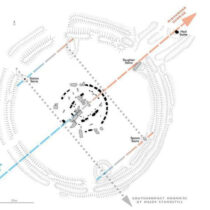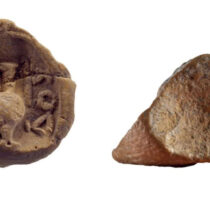Until the 1st of July, 2001, the visitors of the Palazzo Grassi in Venice could admire an extremely interesting archaeological exhibition, which reviewed the Etruscan history from its birth to its decline, thus reviving the myth of this most fascinating civilization. All the basic parameters and qualities that characterize the short but intensive historical presence of the Etruscans were thoroughly analyzed in the 4000 square meters of the exhibition area. More than 700 items of enormous artistic merit were exhibited, loans from 80 museums and private collections from thirteen different countries. The impeccable setting of the exhibition and the rich information and audio-visual material created for the visitor an ideal course, through which one could get acquainted with the major components of the first civilization that has bloomed in the Italian peninsula. The financial basis of the lords and the privileges of the aristocracy were projected and documented; the tendency of the ruling class to demonstrate its wealth was underlined, and the important role of women in the community was stressed; finally, the ideological foundations of the society were outlined: the cult of the ancestors, the significance of religion and divination, the ritual of feasts and the strong symbolism of burials.
The Etruscan civilization flourished from the mid-eighth to the late fifth century B.C., and the Etruscans firmly dominated almost the entire Italian peninsula.
The exhibition tried to answer to some of the major questions concerning the history of the Etruscans: their origin, language, everyday life and society; as well as to solve the puzzle of their total disappearance from the stage of history after the first century AD.
A large part of the exhibition was dedicated to the famous Etruscan funerary monuments, which represent our main source of information, since they are almost the only buildings of the Etruscan civilization that have been preserved until today. The major towns of the Etruscans, such as Veio, Tarquinia, Caere etc. were surrounded by huge necropoleis -perhaps the most extensive ones in the entire ancient world-, which in certain cases were even larger than the towns themselves.
Of special interest is a characteristic peculiarity of the Etruscans’ society, which distinguishes them from their contemporary peoples: the important position of the female sex in the closed Etruscan aristocracy. Women played a protagonistic role as guardians of rules and values and guarantors of the power of the nobility. They enjoyed freedom of action, they owned the right of education, they could inherit fortunes and they could undertake the financial conduct, if a husband had passed away, rights, that is, absolutely unusual in that time.
Finally, the enormous impact of the Greek and Roman civilization on the evolution of the Etruscan history was examined. The Etruscans borrowed from the Greeks the model of administration and of everyday life, and, enchanted by their culture, adapted it to their local traditions, in order to shape their own cultural physiognomy. The Romans, on the contrary, initially copied the Etruscans, then they became their allies, finally they conquered and incorporated them in their empire, using a procedure which assimilated and gradually obliterated them as a people.

